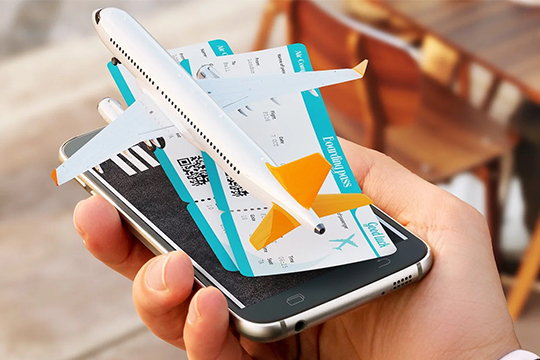How to make money from an app
Users can select from a wide variety of applications in the competitive mobile application industry to find one that best…
The integration of the Internet of Things (IoT) in agriculture has paved the way for innovative solutions, revolutionizing traditional farming practices. In this article, we will explore the diverse applications of IoT in agriculture and understand how it is reshaping the future of farming.
A. Definition of Internet of Things (IoT)
The Internet of Things refers to the network of interconnected devices that communicate and share data with each other. In the context of agriculture, this involves the use of sensors, actuators, and other smart devices to collect and exchange information.
A. Overview of IoT in Agriculture
The application of IoT in agriculture, often referred to as AgriTech, aims to enhance efficiency, productivity, and sustainability in farming practices.
A. Remote Sensing Devices
Precision farming involves the use of remote sensing devices such as drones and satellites to monitor and collect data on crop health, soil conditions, and overall farm performance.
B. Soil Monitoring Systems
IoT-enabled soil monitoring systems provide real-time data on soil moisture, nutrient levels, and temperature, allowing farmers to make informed decisions for optimal crop growth.

A. Wearable Devices for Animals
Farmers can now utilize wearable devices for livestock, tracking the health and behavior of animals to ensure their well-being.
B. Health Tracking through IoT
IoT devices monitor livestock health parameters, enabling early detection of diseases and timely intervention.
A. Smart Irrigation Systems
IoT-based smart irrigation systems analyze weather conditions and soil moisture levels to deliver precise amounts of water, reducing water wastage.
B. Pest Control through IoT
Sensors and actuators help in monitoring and controlling pest infestations, minimizing crop damage and the need for chemical interventions.
A. Real-time Tracking of Agricultural Products
IoT facilitates real-time tracking of agricultural products from farm to market, ensuring transparency and minimizing losses.
Temperature sensors in transportation vehicles maintain optimal conditions for perishable goods during transit, preserving product quality.
A. Predictive Analysis for Crop Yield
Data analytics tools process information from various IoT devices to provide predictive insights into crop yields, helping farmers plan effectively.
B. Decision-making Based on IoT Data
Farmers can make informed decisions on planting, harvesting, and resource allocation based on data-driven insights obtained through IoT applications.
A. Automated Machinery
The integration of IoT in farming equipment, such as tractors and harvesters, leads to automation, improving efficiency and reducing labor requirements.
B. Integration of IoT with Farm Equipment
Smart sensors on agricultural machinery collect data on performance and maintenance needs, optimizing overall farm operations.
A. Reduced Resource Wastage
By utilizing IoT technologies, farmers can optimize resource usage, minimizing water, fertilizers, and energy consumption.
B. Sustainable Agricultural Practices
IoT promotes sustainable farming practices by providing tools for environmentally friendly pest control and crop management.
A. Security Concerns in IoT
As with any technology, IoT in agriculture poses security challenges. Implementing robust cybersecurity measures is crucial to safeguarding farm data and operations.
B. Implementing Effective Cybersecurity Measures
Educating farmers on cybersecurity best practices and implementing secure communication protocols are essential steps to address security concerns in IoT applications.

A. Innovations in IoT for Agriculture
Ongoing research and development continue to bring forth innovative IoT solutions for agriculture, promising further advancements in the near future.
B. Potential Advancements and Growth
The future holds the promise of more sophisticated IoT applications, contributing to increased productivity, sustainability, and profitability in the agricultural sector.
In conclusion, the application of the Internet of Things in agriculture is ushering in a new era of smart farming. From precision farming and livestock monitoring to supply chain optimization and data analytics, IoT is transforming every aspect of agriculture. While challenges exist, the potential benefits in terms of efficiency, sustainability, and economic growth make the integration of IoT in agriculture a promising and necessary evolution.
Is IoT only beneficial for large-scale farms?
No, IoT can be implemented on farms of all sizes. The scalability of IoT solutions allows both small and large farms to benefit from smart agriculture practices.
How does IoT contribute to environmental sustainability in agriculture?
IoT helps in optimizing resource usage, reducing wastage of water, fertilizers, and energy, promoting sustainable and eco-friendly farming practices.
What are the security risks associated with IoT in agriculture?
Security risks include data breaches and unauthorized access to farm systems. Implementing strong cybersecurity measures is essential to mitigate these risks.
Can IoT be used for organic farming?
Yes, IoT can be tailored for organic farming by focusing on monitoring soil health, natural pest control, and sustainable resource management.
Are there any government initiatives supporting the adoption of IoT in agriculture?
Many governments worldwide are supporting AgriTech initiatives, offering subsidies and incentives to farmers adopting IoT technologies for agriculture.

Users can select from a wide variety of applications in the competitive mobile application industry to find one that best…

Travel planning has been transformed in the age of digital ease by smartphone apps that help consumers plan and manage…

Introduction Mobile apps are now essential tools for tourists looking for speed, efficiency, and customised experiences in the fast-paced world…